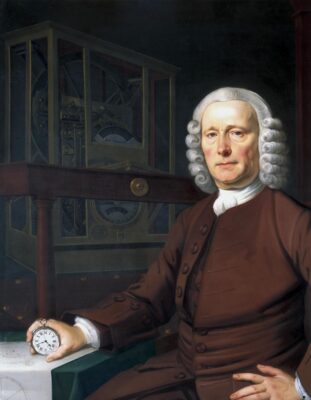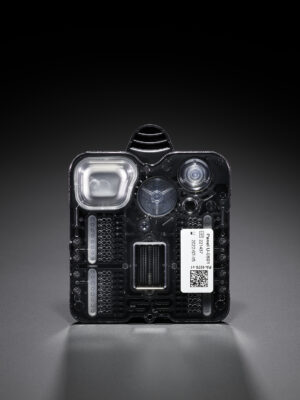While the Nobel Prizes are awarded annually, and the prestigious Fields Medals for mathematics every four years, it’s been centuries since John Harrison won the first Longitude award for revolutionising navigation with his extraordinary maritime clocks.
Longitude Prizes are the nec plus ultra of so called ‘challenge prizes’, which do the opposite to traditional prizes, such as the Nobel and the Fields. While the latter celebrate past achievements, challenge prizes incentivise future efforts to crack a key problem, from tinned food to transatlantic flight.
Today in the Science Museum, I was among the speakers at the award ceremony for a second Longitude Prize, this time on antibiotic resistance. The prize was awarded to Sysmex Astrego for their PA-100 AST System, which will transform the treatment of urinary tract infections.
It has been an honour to be a member of the committee that oversees the Longitude Prize on antimicrobial resistance, chaired by Astronomer Royal Lord Rees, who came up with the idea of a reboot. And it was a relief that the committee was unanimous about the winner, after a detailed and incredibly helpful steer by the Prize Advisory Panel, and that the search only took ten years.
The original Longitude award took decades to be settled. First outlined in the Longitude Act of 1714, only in 1765 did the Board of Longitude agree that Harrison’s H4 had kept time within the most stringent limits of the Act.

Longitude could be determined from the difference between local midday (inferred from when the Sun is highest in the sky) and the time of midday in Greenwich as recorded by the H4. In the Science Museum you can see H5, Harrison’s fifth and last timekeeper that he produced in 1770 as the culmination of his Longitude quest.
The new Longitude Prize on antimicrobial resistance also saw much greater public involvement, after its launch by the then Prime Minister, David Cameron. The 300th anniversary of the original Act was marked by a public appeal by the BBC, with a little help from me in The Daily Telegraph, to vote from a shortlist of six possible challenges.
The public settled on the challenge of antibiotic resistance, and for good reason: the World Health Organization had warned of a ‘post-antibiotic era’ where people will die from previously treatable infections if key drugs no longer work.
In 2014 the new Longitude Prize was launched – in partnership with Nesta and delivered by Challenge Works – to incentivise the creation of new diagnostic tests that can identify whether an infection is bacterial, and if so, the right antibiotic to prescribe to slow the spread of antibiotic resistant infections.
In the wake of efforts more than 250 teams around the world, seed funding for some teams (though not the winner), and an extension of the original deadline, the £8m Longitude Prize was unveiled today in the Science Museum by Challenge Works, part of innovation agency Nesta, and on the BBC’s One Show.
The Longitude Prize goes to Sysmex Astrego for its PA-100 AST System that delivers the power of laboratory testing into a doctor’s office to treat urinary tract infections, painful infections which affect 50-60% of women in their lifetime and the most common bacterial infection treated by the NHS in England. When it comes to UTIs, up to half of infection-causing bacteria are resistant to at least one antibiotic.
To use the PA-100 AST System requires around 10 drops (400 microlitres) of urine, which is introduced into a smartphone-sized cartridge containing a device called a nanofluidic chip, where tiny channels containing a patient’s urine can be challenged with microscopic quantities of antibiotics.
The cartridge containing the nanofluidic chip is inserted into the shoebox-sized PA-100 AST System unit which maintains the temperature of a human body to stimulate the growth of any bacteria that might be present in the urine. Simultaneously, the system exposes the bacteria to five different antibiotics to determine the most effective treatment.

Light is projected through the chip, and a microscope takes thousands of images at regular intervals of every channel, and compares how the bacteria in the channels with antibiotics respond compared with channels without antibiotics.
This marks the first time a point-of-care test is capable of identifying a specific infection and its susceptibility to specific drugs by directly observing how the patient’s infection responds to different antibiotics.
In this way, the test can identify a bacterial infection in just 15 minutes and accurately identify the right antibiotic to treat it within 45 minutes. By comparison, using current methods can take several days.
Mikael Olsson, CEO and co-founder of Sysmex Astrego, winners of the Prize, added: ‘We have already started rolling out the test in Europe, we’re running studies in surgeries across the UK and working with regulators to secure additional approvals. The £8m prize will support us to tailor the test for use with different kinds of UTIs and antibiotics, speeding up access.’
The value of the new test was underlined by Dr Sherry Taylor, GP Partner at NHS practice Temple Fortune Medical Group, London, who said it could revolutionise general practice: ‘It would be amazing – it’s all about using antibiotics only when necessary and appropriate.’
Tris Dyson, Managing Director, Challenge Works concluded: ’I want this to be the start of a revolution in healthcare where rapid point of care diagnostics become a mainstay of medicine.’

Prof Matthew Freeman, Head of Oxford’s Dunn School, where penicillin was first produced, commented that, even when the first antibiotics were used on patients eight decades ago, it was realised that resistance would be a problem: ‘It’s great to see the Longitude Prize recognising the scientists tackling the massive emerging threat of antimicrobial resistance.’
The winner heralds a future where patients can quickly and accurately get a diagnosis and the correct treatment when they visit their doctor. Currently, roughly one third of patients have infections resistant to older first-line antibiotics which have been retired as a result; this means today’s Longitude Prize winner could help identify the remaining 70-75% of patients who could still benefit from older drugs.
My fellow committee member, Dame Sally Davies, UK Special Envoy on Antimicrobial Resistance, and former Chief Medical Officer of England, said today’s winner ‘lays the groundwork for a sea-change in how we manage these precious medicines.’
Dame Sally has been at the vanguard of warning about the dangers of antimicrobial resistance, which the Science Museum examined in its Superbugs exhibition in 2017.
The exhibition went on tour around India and China, underlining how this is a silent, growing and devastating global problem: in 2019, antibiotic resistant infections directly killed 1.3m people worldwide and contributed to the deaths of 5m.
By 2050 it is predicted antibiotic resistant infections will cause 10m deaths annually and the World Bank estimates antibiotic resistance could result in $1 trillion in additional health costs.
The winning test paves the way for a future where similar technologies can transform medicine through, for example, blood and saliva tests to detect other infections. Moreover, new challenge prizes are being devised, not least one to accelerate research on dementia.
The PA-100 AST device and cartridge, and the trophy for the Longitude Prize on AMR are now on display in Medicine: The Wellcome Galleries at the Science Museum.